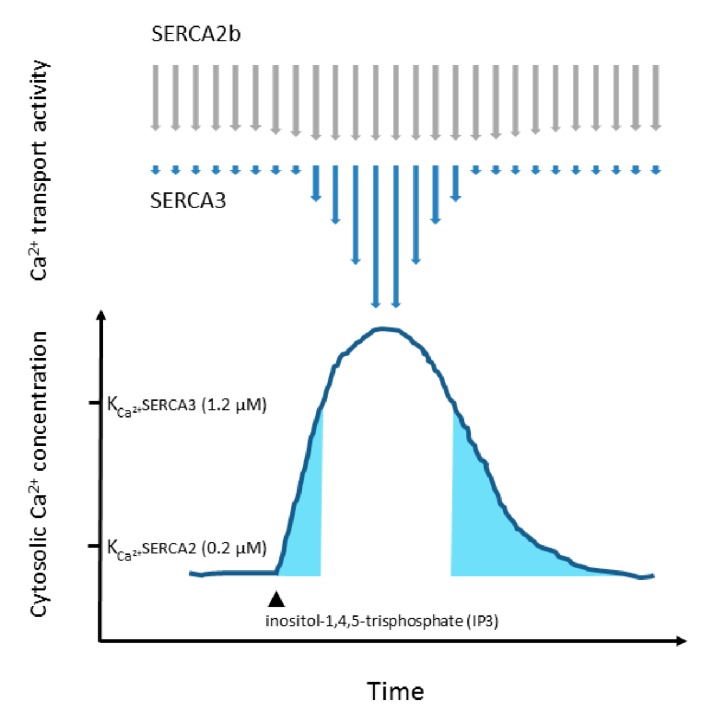Figure 2.
Schematic representation of the evolution of SERCA2b and SERCA3 transport activities during an IP3-induced calcium release event from the endoplasmic reticulum. Calcium transport activity (the number of calcium ions transported by a pump molecule per unit time) of the pumps is stimulated by increasing calcium concentrations. However, due to its higher calcium affinity (KCa2+ ~ 0.2 µM), this stimulation occurs at lower calcium concentrations for SERCA2b than for the lower calcium affinity SERCA3 pump (KCa2+ ~ 1.2 µM). The calcium affinity of SERCA2b lies closer to the calcium concentration of a resting cell, whereas that of SERCA3 is closer to calcium levels that occur during activation, in particular in specialized ER microdomains, where calcium release is locally taking place. Consequently, whereas SERCA2b is nearly maximally active already in a resting cell, SERCA3-dependent transport is at that point only weakly active, becoming activated only later, during the peak of a calcium release event (when local cytosolic calcium concentrations near the ER approaches 1.2 µM). Note that at the beginning and at the end of the calcium signal (blue areas) neither SERCA2b nor SERCA3-dependent transport is stimulated significantly by calcium. When SERCA2b is replaced by SERCA3 during cell differentiation, calcium release is facilitated, allowing more robust calcium signals. The scenario is depicted in the absence of capacitative calcium influx (in the absence of extracellular calcium) for simplicity. Upward facing arrow: cytosolic calcium concentration, downward facing arrows: SERCA calcium transport intensity. Arrow lengths depict transport intensity relative to maximally stimulated (longest arrows); SERCA2b: grey, SERCA3: blue.

